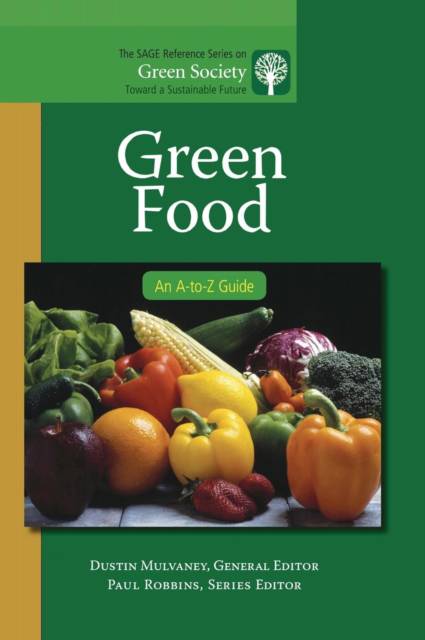
- Afhalen na 1 uur in een winkel met voorraad
- Gratis thuislevering in België vanaf € 30
- Ruim aanbod met 7 miljoen producten
- Afhalen na 1 uur in een winkel met voorraad
- Gratis thuislevering in België vanaf € 30
- Ruim aanbod met 7 miljoen producten
Zoeken
Green Food
An A-to-Z Guide
Dustin Mulvaney
Hardcover | Engels | The Sage Reference Green Society: Toward a Sustainable Future-Series Editor: Paul Robbins | nr. 3
€ 228,95
+ 457 punten
Omschrijving
This third volume in the SAGE Series on Green Society lays out the contours of the field of agri-food studies. It draws on scholars working in the fields of political ecology, rural sociology, geography, and environmental studies to paint a picture of the past, present, and future of agriculture and food. It provides readers with a basic understanding of the institutions, practices, and concepts to identify what is and is not a "green" food. Because food is so intimately connected to our daily lives, the food system offers perhaps the most promise to make change in a sustainable direction.
This volume addresses what a sustainable and green food system might look like, what policies would help realize it, and what kinds of tradeoffs we face in deciding which paths to choose. Green Food: An A-to-Z Guide provides people interested in food and agricultural systems the basic analytical and conceptual ideas that explain why our food system looks the way it does, and what can be done to change it for the better. Roughly 150 entries discuss how to address issues related to a green food system, and vivid photos, searchable hyperlinks, numerous cross references, an extensive resource guide, and a clear, accessible writing style make the Green Society volumes ideal for classroom use.
This volume addresses what a sustainable and green food system might look like, what policies would help realize it, and what kinds of tradeoffs we face in deciding which paths to choose. Green Food: An A-to-Z Guide provides people interested in food and agricultural systems the basic analytical and conceptual ideas that explain why our food system looks the way it does, and what can be done to change it for the better. Roughly 150 entries discuss how to address issues related to a green food system, and vivid photos, searchable hyperlinks, numerous cross references, an extensive resource guide, and a clear, accessible writing style make the Green Society volumes ideal for classroom use.
Specificaties
Betrokkenen
- Auteur(s):
- Uitgeverij:
Inhoud
- Aantal bladzijden:
- 544
- Taal:
- Engels
- Reeks:
- Reeksnummer:
- nr. 3
Eigenschappen
- Productcode (EAN):
- 9781412996808
- Verschijningsdatum:
- 28/06/2011
- Uitvoering:
- Hardcover
- Formaat:
- Genaaid
- Afmetingen:
- 184 mm x 262 mm
- Gewicht:
- 1297 g

Alleen bij Standaard Boekhandel
+ 457 punten op je klantenkaart van Standaard Boekhandel
Beoordelingen
We publiceren alleen reviews die voldoen aan de voorwaarden voor reviews. Bekijk onze voorwaarden voor reviews.








